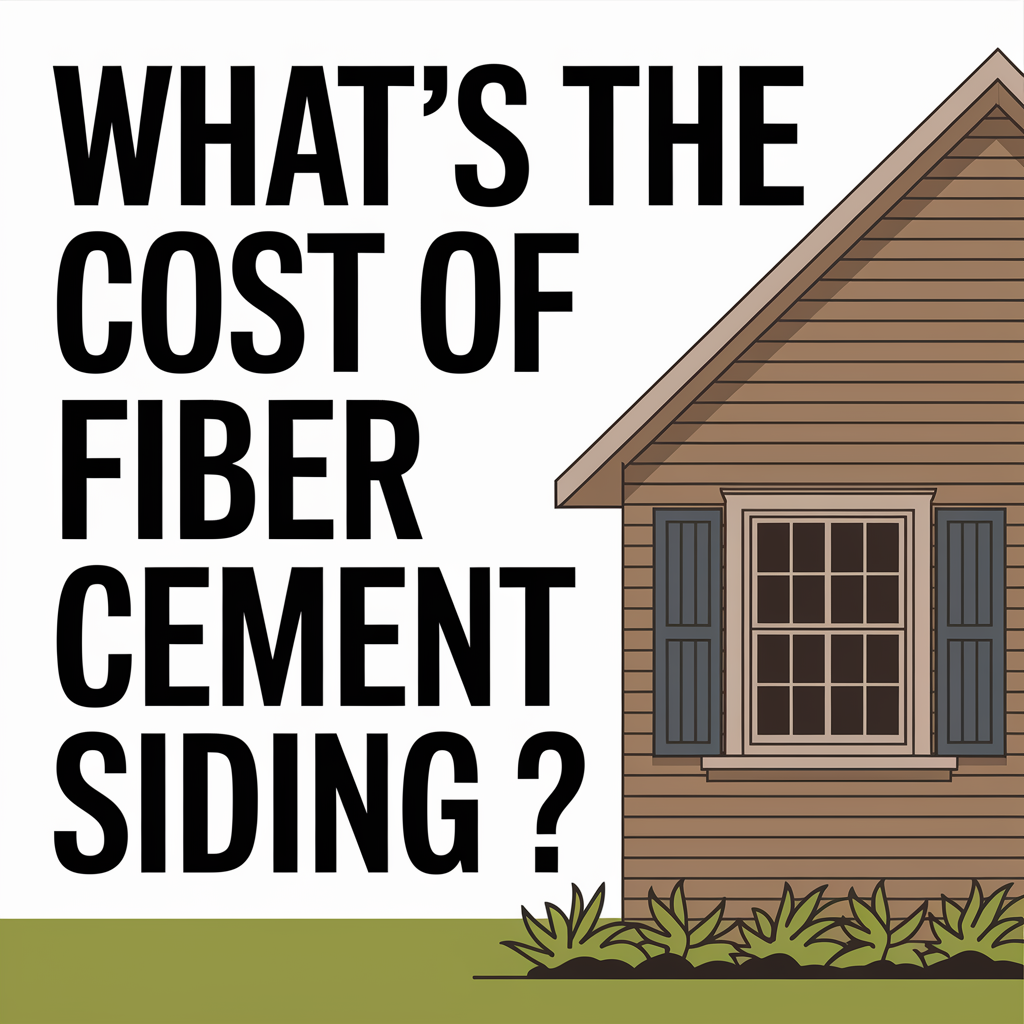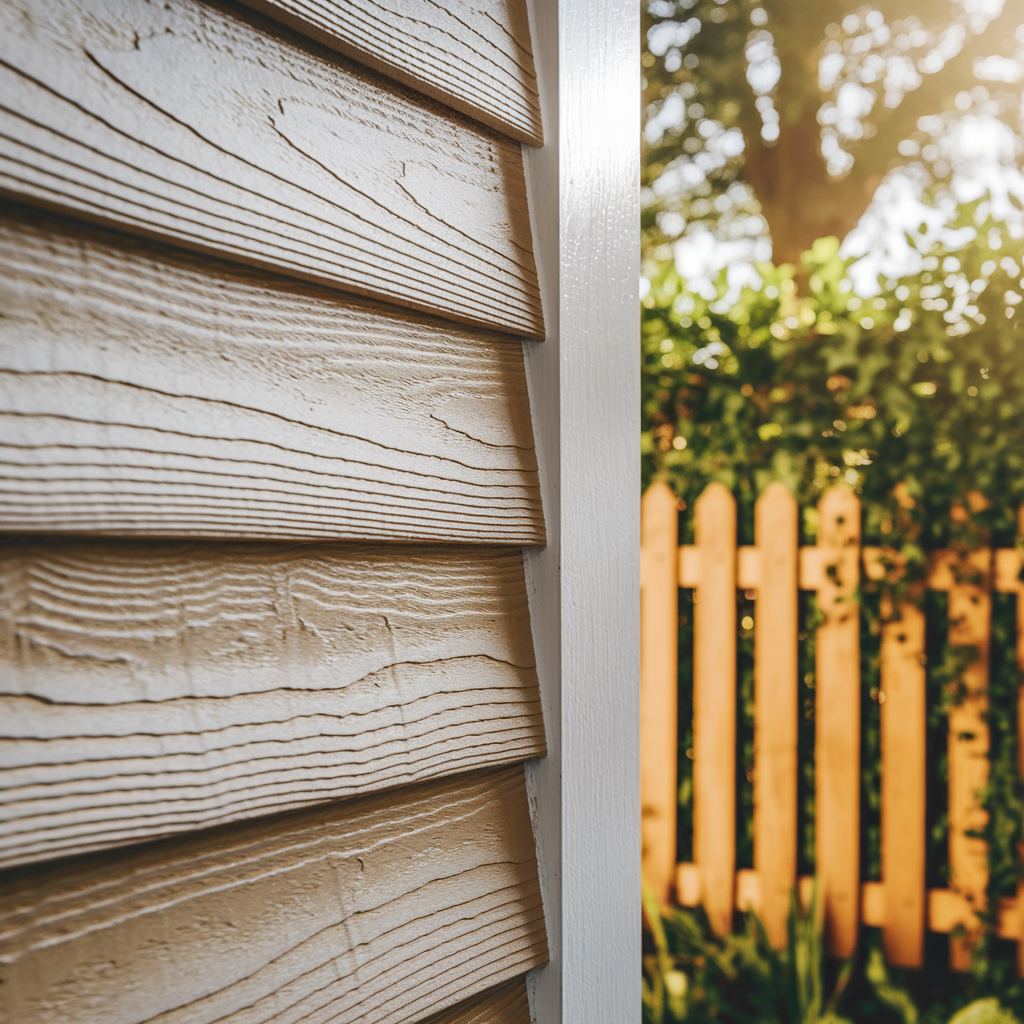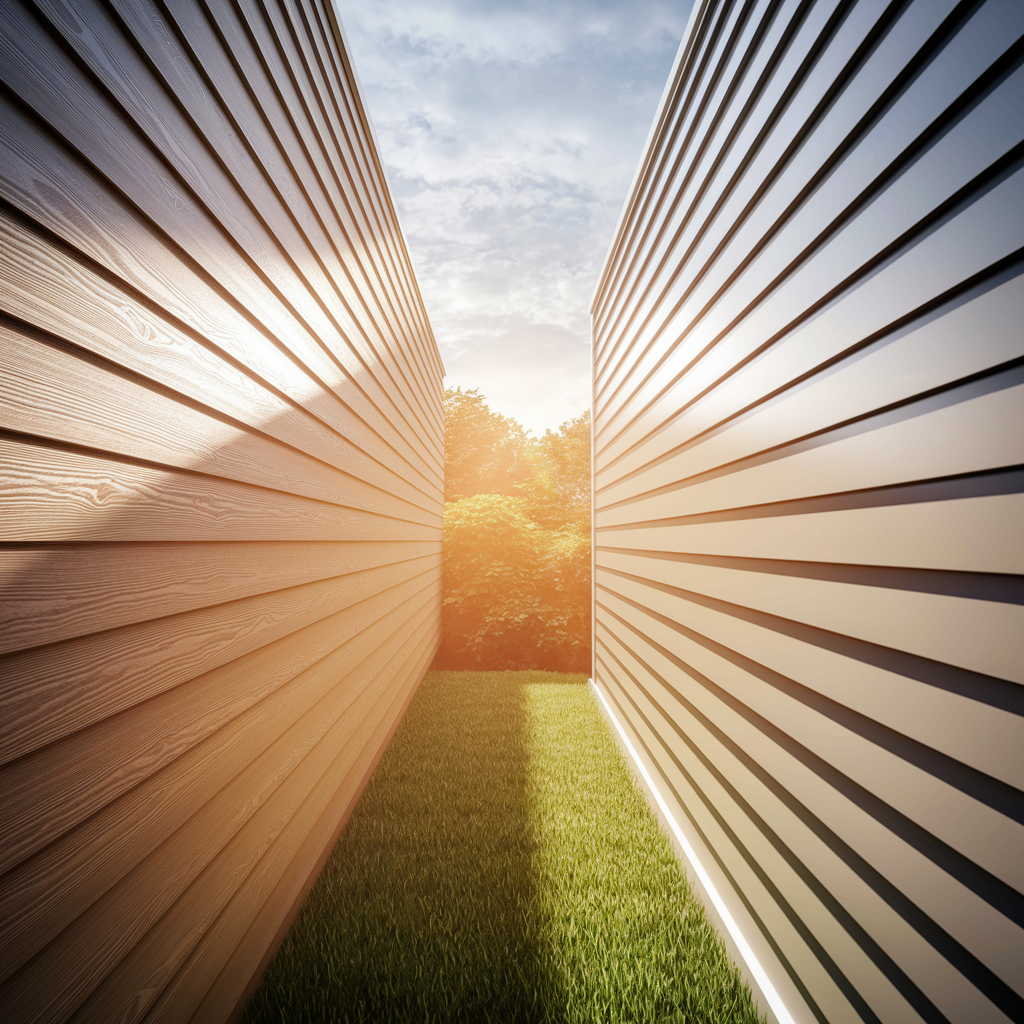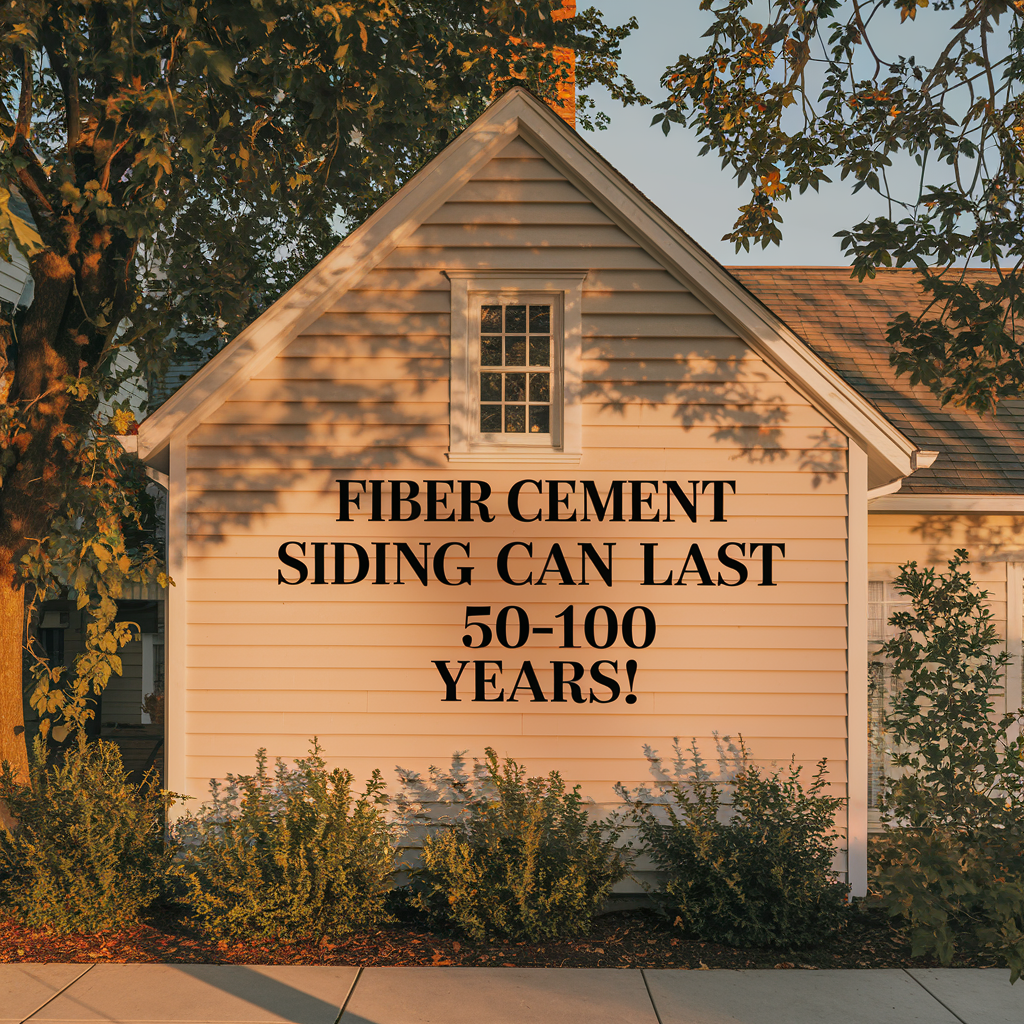
What Is Fiber Cement Siding and Why Do People Choose It?
When we first started thinking about upgrading our home’s siding, I was overwhelmed by options—vinyl, wood, metal… but fiber cement siding kept coming up again and again.
After a little digging (and talking with a few contractors), it quickly made my short list—and for good reason.
Fiber cement siding is made from cement, sand, and cellulose fibers. Sounds industrial, but it’s actually one of the toughest and most stylish options out there. It mimics the look of real wood but resists rot, fire, pests, and extreme weather.
What sold me?
It’s low-maintenance, lasts decades, and actually boosts curb appeal—especially if you’re going for that modern craftsman, farmhouse, or cottage vibe.
If you’re working on improving your home’s outside appearance like we were, I also recommend checking out some DIY ideas for a stylish home makeover while you’re at it.
It’s amazing how much siding and a few small changes can totally transform a house.

How Much Does Fiber Cement Siding Cost Per Square Foot?
Let’s talk numbers—because that’s what I really wanted to know upfront.
On average, fiber cement siding costs between $5 and $14 per square foot installed.
If you’re just buying the materials and doing the install yourself, you could pay closer to $2 to $5 per square foot, depending on the brand and style.
Here’s what I ran into when pricing it out:
- Basic horizontal lap siding (the most common style) was around $8 per sq. ft. installed
- Board and batten styles and shingles cost more—closer to $10–$14 per sq. ft. installed
- Trim boards and soffits (also made of fiber cement) added another few hundred bucks
For a 2,000-square-foot home, that means you’re looking at a total installed cost of $10,000–$25,000, depending on house shape, labor rates in your area, and the siding style you pick.
When we were doing our estimates, I realized how much house design and layout affect siding costs.
Tons of corners, windows, and architectural features mean more cuts, more trim, and higher labor.
If you’re also trying to figure out what other home upgrades are worth the investment, I highly recommend looking into these DIY projects that increase home value.
Siding is definitely up there—but it helps to see the full picture.

What Factors Affect the Cost of Fiber Cement Siding?
When I was pricing out siding options for our house, I quickly realized there’s no one-size-fits-all number—because the final price depends on way more than just square footage.
Here’s what actually changes the cost of fiber cement siding:
1. Size and Shape of Your Home
A boxy home with flat walls? Way cheaper to side.
Add lots of peaks, corners, gables, and bump-outs—and the price starts climbing fast. It’s not just more material, it’s more cutting and custom fitting too.
2. Style of Siding You Choose
Basic horizontal lap siding is the most affordable.
If you go for shake-style panels, scallops, or board-and-batten (which we seriously considered), expect to pay more per square foot.
3. Labor in Your Area
In some areas, siding installers charge $3–$5 per square foot just for labor.
In others, like here in the Midwest, it’s a bit cheaper. But skilled labor shortages can drive prices up fast.
4. Brand You Choose
There’s a big difference between brands like James Hardie, Nichiha, and Allura.
Some offer better warranties, pre-finished colors, or extra thickness—but you’ll pay more for the premium stuff.
5. Trim, Paint, and Accessories
Don’t forget trim boards, soffits, caulk, paint, and fasteners.
These “extras” added nearly $2,000 to our siding estimate.
This was a good reminder for me that home repair is never just about the big stuff.
Even when you’re working on exterior upgrades, the details matter—and that’s why I always keep this DIY home repair guide bookmarked to help me stay on top of the little things that pop up during every big job.

Fiber Cement Siding Installation Cost: DIY vs Hiring a Pro
Now here’s where you can save thousands—or break something.
When I was weighing out costs, I seriously considered installing the siding myself.
Fiber cement is a DIY-friendly material in theory—but it’s also heavy, dusty, and unforgiving if you get your cuts wrong.
Here’s what I found when comparing pro install vs DIY:
Hiring a Pro
- Average labor cost: $3–$7 per sq. ft. depending on complexity
- Licensed pros get it done faster and with fewer mistakes
- Most warranties only apply if a certified installer does the work
- Peace of mind is big—especially if ladders and saws aren’t your thing
Doing It Yourself
- Material cost only: $2–$5 per sq. ft.
- You’ll need special saw blades and fiber cement shears
- Plan on help—it’s heavy, especially for two-story homes
- A few crooked cuts can be costly when it comes to trim and caulk
If you’re confident with measuring, cutting, and handling power tools, DIY might be worth it. But if your home has complicated shapes or you’re working alone, you might want to leave this one to the pros.
For me, it was worth looking at the full picture and deciding where I’d be better off investing my time and energy.
And when I wanted a smaller win first, I tackled easier projects like mounting outdoor fixtures to concrete to build confidence before committing to something major like siding.

Best Fiber Cement Siding Brands (and Their Prices)
When I started comparing brands, I realized quickly: not all fiber cement siding is created equal.
Some companies offer better durability, warranties, or prefinished color options—and it can change the cost by several dollars per square foot.
Here are the top names I found when researching:
1. James Hardie
The most well-known brand by far.
- Cost: Around $10–$14 per sq. ft. installed
- Pros: Longest track record, baked-on color options (ColorPlus), fire-resistant
- Cons: More expensive than others, strict install rules to keep the warranty valid
2. Allura
A popular James Hardie competitor, often slightly more affordable.
- Cost: $7–$11 per sq. ft. installed
- Pros: Similar styles and textures, good impact resistance
- Cons: Some installers say it’s a little more brittle during cuts
3. Nichiha
More common in commercial installs, but their residential line is growing.
- Cost: $9–$12 per sq. ft. installed
- Pros: Very sleek styles for modern homes, prefinished colors
- Cons: Not as widely available, fewer trim options
Each brand has different thicknesses, finishes, and warranty levels.
If you’re hiring a contractor, definitely ask what brands they use—some only install James Hardie because they’re certified and backed by warranty.
If you’re the type who likes to compare materials up close before deciding, it’s a lot like when I was choosing materials for my DIY pallet benches and chairs. You don’t know what feels right until you’ve looked at a few side-by-side.

Fiber Cement vs Vinyl Siding: Cost and Value Compared
I’ll be honest—before going all-in on fiber cement, I strongly considered vinyl.
It’s cheaper, easier to install, and still widely used across the country.
But once I did the homework, fiber cement clearly brought more long-term value.
Here’s how they stack up:
| Feature | Fiber Cement | Vinyl |
|---|---|---|
| Cost Installed | $10–$14/sq. ft. | $4–$7/sq. ft. |
| Durability | 30–50 years | 20–30 years |
| Appearance | Looks like real wood | Looks like plastic (most of the time) |
| Fire Resistance | Excellent | Poor |
| Maintenance | Low, needs paint every 10–15 years | Very low |
For us, it came down to long-term investment.
Fiber cement just looks better and lasts longer—and if you’re living in the home for more than a few years, it starts to make a lot more sense financially.
Plus, boosting curb appeal with a clean siding upgrade like this makes a huge difference.
When we paired ours with a few porch updates (check out how we created a welcoming entryway here), it completely transformed the feel of our home from the street.

How Long Does Fiber Cement Siding Last?
One of the biggest reasons I ended up going with fiber cement was simple: I didn’t want to mess with siding again for decades.
And fiber cement delivered exactly what I was looking for—something long-lasting that wouldn’t crack, warp, or fade the way vinyl or wood can.
Here’s what I found out when researching:
- Fiber cement siding typically lasts 30 to 50 years, and some brands even offer warranties up to 50 years
- It’s resistant to rot, insects, fire, and UV damage
- If painted properly, it holds color well for 10 to 15 years before it needs a repaint
The only real maintenance I’ve done so far is the occasional hose-down and once-a-year visual inspection for caulk and seams. That’s it.
Compared to old-school wood siding or cheaper vinyl that can fade or crack in extreme temps, this stuff has held up like a champ.
And if you’re working on keeping the rest of your house in tip-top shape too, check out these essential maintenance tips for new homeowners. Siding’s just one piece of the puzzle.

What Are the Pros and Cons of Fiber Cement Siding?
I like to know what I’m getting into before I drop thousands of dollars on anything—and siding was no different.
So here’s the no-fluff, honest list of what I’ve learned from owning fiber cement siding and talking to other homeowners who’ve done the same.
Pros
1. Looks Like Real Wood, Without the Headaches
You can get that classic lap siding or board-and-batten look with none of the rot or warping issues wood brings.
2. It’s Tough as Nails
We’ve had hail, windstorms, and kids hitting balls against it—it doesn’t flinch.
3. Fire and Pest Resistant
Unlike vinyl or wood, it doesn’t melt, and bugs don’t touch it.
4. Adds Long-Term Value
Buyers like to see James Hardie or Allura siding on a home. It’s a selling point.
Cons
1. It’s Heavy
This isn’t a one-person DIY project unless you’ve got serious help. It takes muscle—and good tools—to install.
2. Costs More Upfront
It’s definitely pricier than vinyl, especially if you go with a brand name and pro install.
3. Needs Repainting Eventually
Every 10–15 years, you’ll likely need to repaint or touch it up—though prefinished options like Hardie ColorPlus help with that.
If you’re someone who likes durable, low-maintenance upgrades that don’t need constant babysitting, it’s a solid win.
Just be ready for the upfront spend—and know it pays off in the long run.
I’ll say this: if you’re the type of homeowner that likes to handle their own repairs and be in control (like me), you’ll also love having siding that doesn’t give you constant issues.
When I made the switch, it felt just like when I first started tackling common house problems without a plumber or handyman. Worth every penny.

How to Save Money on Your Fiber Cement Siding Project
Let’s be real—fiber cement siding isn’t cheap. But there are definitely smart ways to bring the cost down without cutting corners.
When I did ours, I found a few things that helped stretch the budget without sacrificing quality.
1. Buy Materials Yourself (If You’re Handy)
Contractors often mark up materials.
If you’re comfortable sourcing your own James Hardie or Allura panels from a local supplier or big-box store, you can save a good chunk.
Just make sure to double-check measurements—returns are tricky with heavy materials like this.
2. Schedule During the Off Season
Like roofing, siding installs slow down in late fall or early winter.
Some contractors offer discounts just to keep crews working.
That’s how I got ours done for about 15% less than the spring quote I got earlier that year.
3. Handle the Prep Work Yourself
Removing old siding, trimming bushes, clearing access around the house—these are things I was able to knock out over a weekend.
Some pros charge hundreds just to do this kind of prep.
4. Get Multiple Bids
I got quotes from three local companies and the prices ranged by over $6,000.
Same brands. Same house. Different labor rates.
It’s worth the phone calls.
If you’re trying to cut costs in other parts of your home too, these budget-friendly home improvement ideas might give you even more ways to save and still upgrade the look and feel of your space.

So, Is Fiber Cement Siding Worth the Cost in 2025 & beyond?
If you asked me a year ago whether the higher price tag of fiber cement was worth it, I might’ve hesitated.
Now that we’ve had it installed? Absolutely.
The curb appeal upgrade was instant.
It holds up to weather, it looks sharp, and it made our home feel new again without a full remodel.
And knowing I don’t have to worry about rot, bugs, or constant maintenance? That’s worth it to me.
Just remember:
- Know your square footage
- Pick the style that fits your home
- Get several bids
- And if you’re up for it, handle the prep or small tasks yourself
And if you’re just starting to look into siding because your current setup isn’t holding up, make sure to check out our other guides like how to identify common signs of water damage behind your walls, because sometimes siding upgrades start with fixing what’s underneath.
In 2025, fiber cement siding cost may be higher than vinyl—but so is the value.
And for me, that tradeoff was worth every dollar.
As an Amazon Associate we earn from qualifying purchases through some links in our articles.



